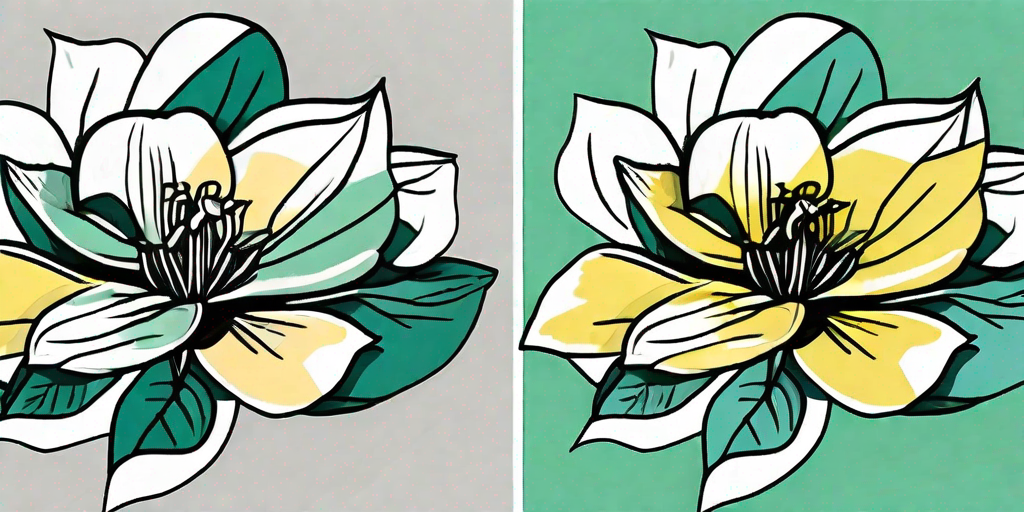
Gardenias, with their intoxicating fragrance and glossy green leaves, are a popular choice for many garden enthusiasts. However, these beautiful plants are not without their share of troubles. From yellowing leaves to black sooty mold, gardenia diseases can turn your horticultural dream into a nightmare. But fear not, dear reader, for we have the perfect antidote to your gardenia woes. This guide will arm you with the knowledge and tools to tackle these pesky problems head-on. So, roll up your sleeves, put on your gardening gloves, and let's dive in!
Understanding Gardenia Diseases
Before we can wage war against gardenia diseases, we must first understand our enemy. Like any good detective, we need to gather clues and identify the culprits causing our gardenias distress. The most common gardenia diseases include root rot, leaf spot, and sooty mold. Each of these has its own unique set of symptoms and treatment methods.
Root rot, as the name suggests, is a disease that affects the roots of the plant. It is usually caused by overwatering or poor drainage. Leaf spot, on the other hand, is a fungal disease that causes black or brown spots on the leaves. And lastly, sooty mold is a type of fungus that forms a black coating on the leaves, often a result of an infestation of pests like aphids or whiteflies.
Root Rot
Root rot can be a silent killer. Often, by the time you notice the symptoms, it's already too late. The plant wilts, leaves turn yellow, and eventually, the entire plant dies. But don't despair, there are ways to prevent and treat this disease.
Prevention is always better than cure. Ensure your gardenias are planted in well-draining soil and avoid overwatering. If you suspect root rot, remove the plant from the soil and cut away any black, mushy roots. Then, replant in fresh, well-draining soil.
Leaf Spot
Leaf spot is like the acne of the plant world. It's unsightly, but usually not life-threatening. This disease causes black or brown spots on the leaves of your gardenias. It's most commonly caused by a fungus, but can also be a result of poor air circulation or high humidity.
To treat leaf spot, remove and dispose of any infected leaves. Then, apply a fungicide to the remaining leaves. To prevent future outbreaks, ensure your plants have plenty of space for air circulation and avoid watering the leaves directly.
Sooty Mold
Sooty mold is the uninvited guest that shows up when you have a pest problem. This black, soot-like fungus grows on the honeydew (a sweet, sticky substance) produced by pests like aphids and whiteflies. While it doesn't directly harm the plant, it can block sunlight, hindering photosynthesis.
To get rid of sooty mold, you first need to deal with the pests. Use an insecticidal soap or neem oil to treat the infestation. Once the pests are gone, the sooty mold will gradually disappear. You can also gently wipe off the mold from the leaves with a damp cloth.
FAQs
Why are my gardenia leaves turning yellow?
Yellowing leaves can be a sign of several issues, including overwatering, nutrient deficiency, or root rot. Check the soil moisture levels and adjust watering as necessary. If the problem persists, consider testing the soil for nutrient levels or signs of disease.
Can gardenia diseases spread to other plants?
Yes, some gardenia diseases, especially those caused by fungi or pests, can spread to other plants. It's important to isolate infected plants and treat them promptly to prevent the spread of disease.
How often should I water my gardenias?
Gardenias prefer consistently moist, but not waterlogged, soil. The frequency of watering will depend on your climate and the time of year. As a general rule, water when the top inch of soil feels dry to the touch.
Preventing Gardenia Diseases
Prevention is the best medicine, as they say. And this is certainly true when it comes to gardenia diseases. By providing the right growing conditions and regular care, you can keep your gardenias healthy and disease-free.
Firstly, ensure your gardenias are planted in well-draining soil. They prefer acidic soil with a pH between 5.0 and 6.0. Regularly test your soil and adjust the pH as necessary. Secondly, gardenias need plenty of sunlight, but they also appreciate some afternoon shade in hot climates. Lastly, maintain a regular watering and feeding schedule. Gardenias benefit from a slow-release fertilizer applied in the spring and again in mid-summer.
Conclusion
Gardenias may be a bit high maintenance, but their stunning blooms and heavenly scent make them worth the effort. With this guide in hand, you're well-equipped to tackle any gardenia diseases that come your way. So, go forth and grow those gorgeous gardenias without fear. After all, a little dirt never hurt anyone!















